Wagyu around the World - Argentina
Dr Luis O Barcos (presently OIE representative for Americas) visited Japan in 1998 under the auspices of Sitio Argentino de Producción Animal. The excellence of Wagyu was recognised so 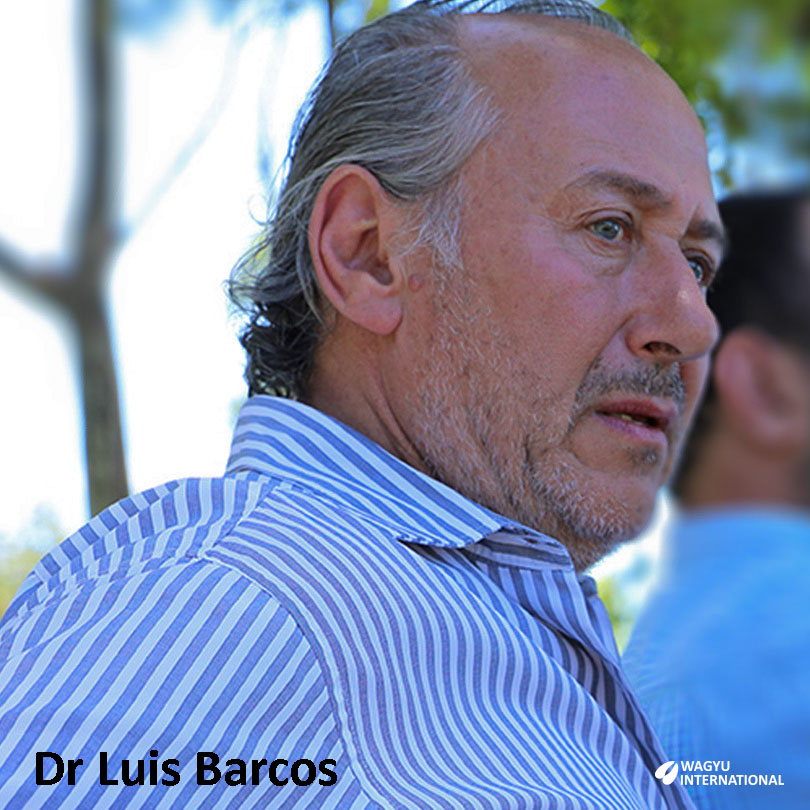 the Wagyu strains and production systems were studied. The following attributes were the key drivers in selecting this breed for Argentina: genetic ability for heavy marbling, low birth weight, docility, very high fertility and ability to adapt to many environments. Exports from Japan were not allowed so Canada and USA were subsequently visited.
the Wagyu strains and production systems were studied. The following attributes were the key drivers in selecting this breed for Argentina: genetic ability for heavy marbling, low birth weight, docility, very high fertility and ability to adapt to many environments. Exports from Japan were not allowed so Canada and USA were subsequently visited.
70 Black and Red Wagyu embryos were imported by Don Benjamín to Gabriel Romeo from Canada and USA in 2000. Implants and inseminations were carried out in spring 2001 by Dr Barcos and Dr Jorge Luis Meré. 35 calves were born. Tasting of the first batch of Wagyu beef at La Unión Restaurant in 2003 proved to be a resounding success.
The pure Wagyu herd has expanded to 200 head and commercially there are about 3,000 crosses on British females, especially Angus, although initial trials were also carried out over Braford and Brangus females.
Luis Barcos was born in Colon, Province of Buenos Aires and graduated as a Veterinarian from the University of Buenos Aires. He carries out and supervises the production process from breeding to distribution, always maintaining a spirit of constant innovation in order to improve and maintain the quality of their products.
His son Juan Barcos was born in Buenos Aires and trained as a professional chef at IBAHRS (International Hotel and Restaurant School) and at IAG (Instituto Argentino de Gastronomia), and as a Sommelier at CAVE (Centro Argentino de Vinos y Espirituosas). His experience in gastronomy leaned over the years towards the exploration of different types of bovine meats, their production, their characteristics, their quality attributes and applied cooking.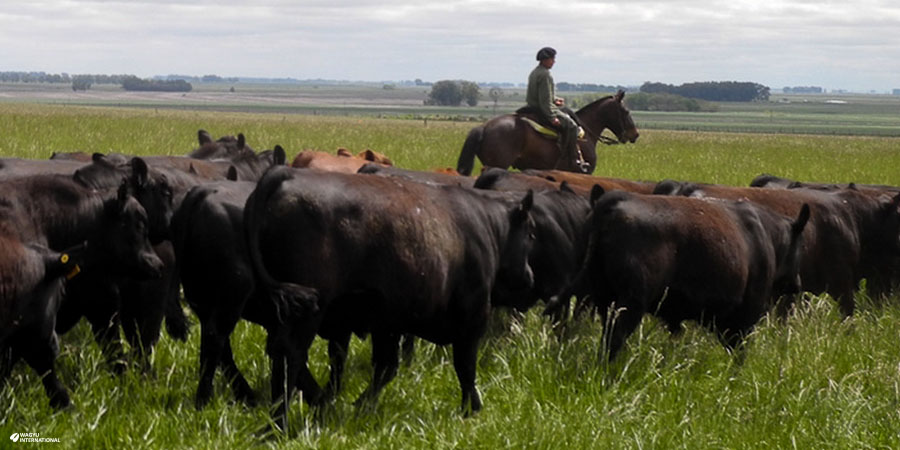
Presently he is President of the ICOCA (Institute of Meat Sciences and Trades) and his predominant roles at Barcos & Sons are quality control for the subsequent acceptance of the products in the local market and for export.
Calves are raised on La Estancia Los Rosales in the Carbo Station of the Province of Entre Rios, where the Manager Antonio and his wife Silvina take care of the cows and the calves and Veterinarian Manuel Franchini is in charge of controlling the health.
Finishing is carried out on Don Pedro Ranch in Jovita, Province of Cordoba with corn and wheat straw. The animals are under the care and supervision of Augusto Gioara and Gabriel Formini.
The Wagyu association - La Asociación Argentina de Criadores de Wagyu - had been formed in 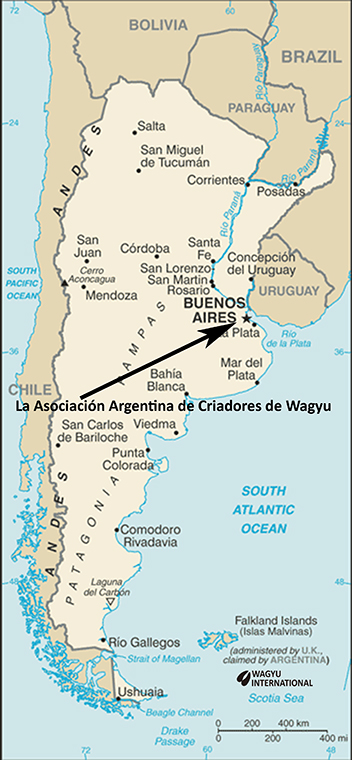 2000. Don Benjamín is President and members include: Kiguchi World (Mimura Yuiji), La Negra Agropecuaria (de Angel Rossi), Ganadera Ibicuy (Roque Fernández), Gregorio Numo y Noel Werthein SA (Daniel Wertheim), Nueva Vida (de Enrique Klein) and Dr Luis Barcos.
2000. Don Benjamín is President and members include: Kiguchi World (Mimura Yuiji), La Negra Agropecuaria (de Angel Rossi), Ganadera Ibicuy (Roque Fernández), Gregorio Numo y Noel Werthein SA (Daniel Wertheim), Nueva Vida (de Enrique Klein) and Dr Luis Barcos.
The objectives of La Asociación Argentina de Criadores de Wagyu are to promote the Wagyu breed and to make genetics available to enhance tenderness, juiciness and flavour from marbling.
The association had grown to 100 herds with 2,000 herd in the national herd by 2006. Production of several thousand crosses with Angus and other marbling breeds is primarily on pasture then they are supplemented with corn, barley and oats. They are fed up to a liveweight of 700 kilograms at 30 months of age.
Embryos, semen and beef are marketed on the Wagyu Argentina S.A. website and beef is branded as Kobe Beef Argentina. Vacuum packed tenderloin retails for peso 600 (ARS). The beef is served in discerning restaurants from between peso 150 and 400. 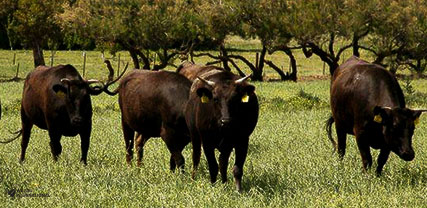
During the initial trials with Wagyu in Argentina, steers and heifers reached 700 to 750 kilograms at 30 to 34 months, but recommendations were made for 650 to 700 kilogram offtake at 30 months of age. Finishing is carried out in a corral for at least 12 months, with a daily gain of 700 to 800 grams and between 20 and 30% less conversion than a British steer. The cost of production is twice that of a British steer, but it is offset by the value of the meat that is traded at much higher international prices because of the quality from the pronounced marbling. They are reproductively precocious.
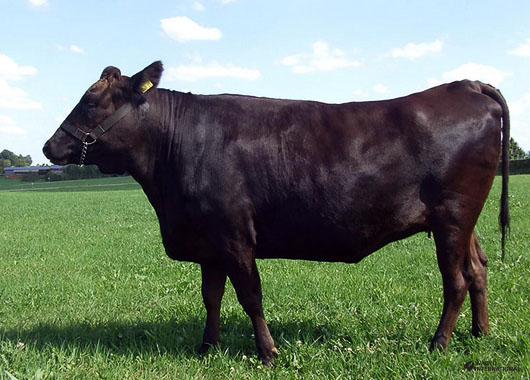 Wagyu Argentina S.A. has their pedigree Wagyu herd at the Santo Tomás de la Sierra Ranch with more than 200 head.
Wagyu Argentina S.A. has their pedigree Wagyu herd at the Santo Tomás de la Sierra Ranch with more than 200 head.
Cabaña La Trinidad, Buenos Aires Province, beyond La Plata, had been raising black and red Aberdeen Angus cattle of high genetic quality when they decided in 2006 to incorporate the Wagyu breed. The attributes that Wagyu offered were: low calf weight at birth so facilitating calving, maximum economic return, high fertility index - shorter cycles in females and higher performance in bulls, high climatic adaptation, high heritability of intramuscular marbling and overall superior carcass performance. The first pure Wagyu calves were born in 2009 from embryo transfer, carried out with imported semen on Aberdeen Angus recipients. Today the pure Wagyu and crosses excel on the pasture.
Gustavo Almassio is an agronomist and a farmer based at La Dulce, a small town in the southeast of the Buenos Aires Province. He decided to value add his operation on the 330 hectare farm. He didn’t want to do the same as other ranchers and heard about the Wagyu breed.
He contacted Luis Barcos who provided semen to use in his Angus herd. 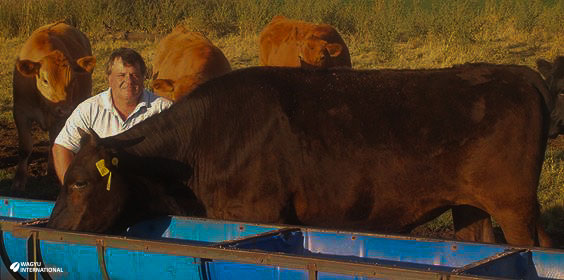
In a country where steers go to the meat packers at a maximum weight of 450 kilograms (live weight), it was challenging to raise them to be heavy enough to obtain a Marble score of 8. He crosses Wagyu genetics over his Angus cows and has reached 1/2, 3/4 and 7/8 cross (F3). He calls them ‘Wangus’.
He uses the ultrasound readings to predict the marbling and fat thickness of his steers to reach optimum finish at lowest feed cost. After six years, he is producing around 20 Wangus steers per year.
The Argentinian government announced restrictions are to be imposed to prohibit the export of beef for 15 days in May 2021. This was an attempt to lower the price of domestic beef which had been rising through 2014. Increased volumes were going to Europe and there was concern that the deficit in Russia might draw on beef from Argentina.
Argentina’s beef exports in 2020 accounted for 897,500t, with primary markets including 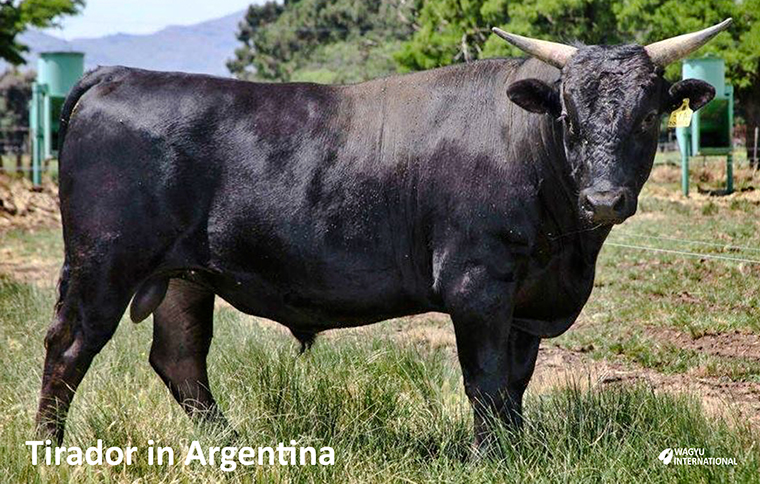 China, Israel and neighbouring Chile. In Argentina’s absence, the US and Brazil have filled some of the void in frozen trade into China, with US volumes recently surpassing those from Australia.
China, Israel and neighbouring Chile. In Argentina’s absence, the US and Brazil have filled some of the void in frozen trade into China, with US volumes recently surpassing those from Australia.
At the beginning of September 2021, the tight restrictions on beef exports were extended until the end of October, while trying to rein-in domestic inflation and surging domestic beef prices. It was then announced that exports will be lifted from October 4, 2021.
China accounted for 76% of Argentina’s beef exports for the year to August. Argentina accounted for 21% of China’s imports for the year to August, second only to largest exporter Brazil, which held a 38% share.
Beef consumption in Argentina has been in long-term decline, from a peak of 69.3kg per person in 2009 to less than 50kg in 2020.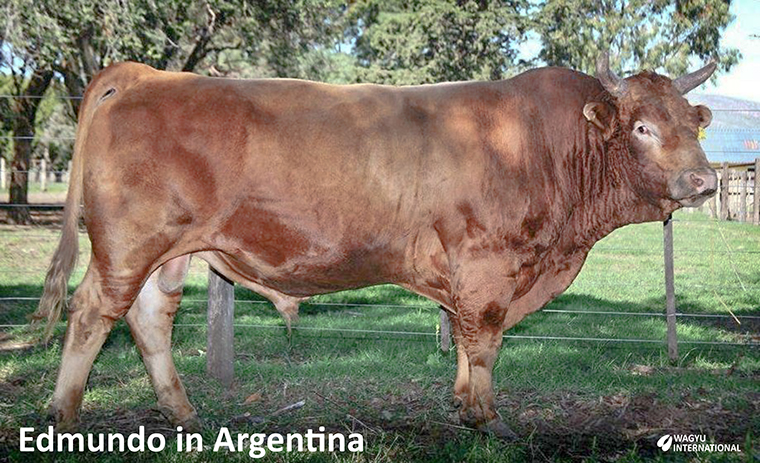
The traditional way to serve beef in Argentina is the ‘asado’. It is not simply an Argentinian barbeque. It is more of a ritual, a tradition passed down from family member to family member - a social gathering of the generations. Cattle in Argentina too are raised slow and steady. This allows them to yield a much higher quality of meat from the lush and fertile lands that surround Buenos Aires. They are called ‘The Pampas’. These seemingly endless fields are filled with lush green grass from this perfect land and climate.
Slow and steady is the recipe for success from the cooking. Instead of putting the perfectly butchered meat directly on an open flame, these delicate cuts are placed off to the side of the grill, where the indirect heat from the wood/briquettes gives the meat a smoky flavour while still keeping it mouth-wateringly tender.
A ban was introduced in May 2021 on all meat exports which caused a strike by producers in the country. It was then extended to restrictions on certain beef cuts.
In January 2022 the limits on exports of seven beef cuts will be kept through to the end of 2023. Domestic inflation is being targeted. Full and half cattle carcasses are prohibited.
The country is in the third year of a recession. Beef prices in Buenos Aires are increasing 48% year over year indicating that price controls and beef export restrictions have failed to hold in inflation.
Genetics
Wagyu breeding is progressing in Argentina with seedstock herds expanding.
Fattening can be for longer than 12 months or else short finishing is between 90 and 120 days so genetic preferences will vary considerably.
Imports of Wagyu genetics are mainly from Australia and USA.
References
E farm news. The dream to breed Wagyu cattle in the Pampas comes true. 26 April 2018
La Asociación Argentina de Criadores de Wagyu website
Setours. 3 reasons why Argentina has the best steak in the world.
